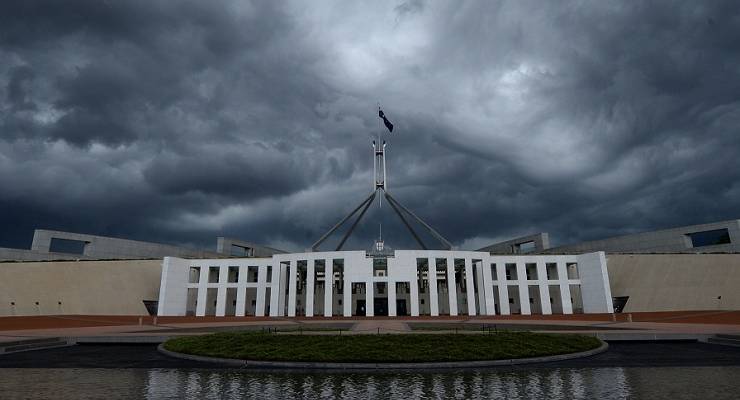
Saul Eslake is an independent economist, company director and public policy advisor.
We now have almost 60 years of unambiguous and unequivocal evidence telling us that anything that allows Australians to pay more for housing than they otherwise would –- first homeowner grants, stamp duty concessions, mortgage deposit guarantee schemes, shared equity schemes, preferential tax treatment for property investors, and indeed lower interest rates or reductions in credit standards –- results, primarily, in higher house prices rather than higher rates of home ownership.
The scheme announced by the government yesterday would, prima facie, enable singles to pay up to $250,000 and couples up to $600,000 more for housing than they otherwise would (based on the maximum amount people can take out of their super, which then becomes part of their deposit, against which they can then borrow up to as much as four times, assuming a 20% deposit requirement). So it will certainly have the same effect as the schemes I listed above.
And there is no annual cap on the number of people who can take this up — unlike the government’s deposit guarantee schemes, or Labor’s “shared equity” scheme announced during the election campaign. Nor are there any limits on the income of applicants, or on the value of the property purchased using the scheme. The only constraining factor is likely to be: how many aspiring first home buyers have that much money in their super?
This scheme will be warmly welcomed (as I have no doubt it is intended to be) by the 11 million or so voters who already own at least one residential property, and especially by the 2 million or so voters who own two or more properties. It may be welcomed by the much smaller number of would-be first home buyers who have the capacity to take advantage of it, although you’d want to ask, how many of them actually are there — and if a young would-be homebuyer has been paid so much that they have been able to accumulate that much super, why do they need to draw it down in order to buy a first home?
But it will be greeted with despair, I suspect, by the majority of the typically 100,000 people a year who succeed in becoming first-time buyers — and the presumably larger number who would like to but have been unable to become first-time buyers.
And it will be greeted with similar despair by those who, like me, have spent years wishing that politicians would actually learn something from the evidence of the past six decades.
The policy, of course, also reflects the fact that the Coalition hates superannuation — because it confers greater powers and influence on unions than its declining membership would otherwise allow them to have — other than as a vehicle for allowing older Australians to pay less tax, as evidenced by the other policy announced yesterday of expanding eligibility to transfer house sale proceeds into superannuation.
Although the government says its policy won’t ultimately hurt people’s retirement savings because they’ll have to tip the amount plus the capital gain on it back into superannuation when they sell the property they’ve purchased, that assumes that residential property prices will grow at a similar or faster rate than a typical super fund.
That has been true over the past 20-30 years — but precisely for that reason may not be true over the next 10, 20 or 30 years. Moreover, people don’t normally leverage into super, whereas they do into residential property, so this scheme exposes people to greater overall asset price and interest rate risks than they would otherwise face, as well as possibly encouraging them to make what could turn out to be a bad “asset allocation” decision.
I want to scream, “This reckless inflation of house prices must stop!” But of course it won’t.
Disclosure: Contrary to the claims of Senator Jane Hume this morning, Saul Eslake does not own more than one home.








More populist – & illogical – policy from Morrison & Co. Not to mention damaging.
As for the oldies downsizing & pouring $300K into super, it’s worth remembering that changing properties is expensive. Factor in the marketing costs, agent’s commission, legal fees & stamp duty on the new property. An exercise costing potentially $70-100K…or more.
Perhaps we should make changing homes cheap enough that it is no impediment to changing jobs. That way an area of declining employment would have declining house prices as workers move themselves and their equity to areas of expanding employment and rising home value.
Whatever happened to the ‘sole purpose test’?
How does this ‘policy’ dovetail with the investment strategy requirement imposed by APRA and ATO with 40% of the member’s balance being ‘invested’ in one lumpy asset?
What is the ‘risk’ of the home being washed away in a flood or burnt to ashes in a bushfire?
What is the financial risk of the house being uninsurable due to flood and/or fire risk?
Does the amount owed (back) to the member’s super fund account rank ahead of the bank mortgage?
More than a few problems here!
The whole housing shemozzle needs picking at from every direction, and it’s going to be to the detriment of investors and home owners (haves) and by goodness they will band together and make a bucketload of noise to protect their precious $$$ – including demonise evil have nots and subject us to years upon years of liberal governance to protect themselves
In short were screwed and I’m renting for the rest of my days
I think that is sufficient analysis of this stupid proposal. Well done Saul, and Crikey yesterday.
Join the club, Trent. Except that rentals are getting scarcer and more expensive. If there was a way that the Haves could battery farm us, they would.
It would seem that ‘they’ already have and what’s more, we are paying for our own cages.
Did lockdown/WFH not prove the unnecessity of living within commuting hours of the CBD?
Hard to stop the libs frigging with any lump sum they see, especially if it is someone elses. There are similarities here to domestic violence. One of the things an abusive person does to their spouse is to drain away the spouses savings or access to money. This makes them more dependant on their abuser and less able to escape. What we see here isour government deliberately weaking an entire generations access to wealth for perhaps the same reason. And as others have pointed out, it will affect the power of the industry funds to influence ethical investment decisons which may be the ultimate aim of this shocking policy.
In a respectable capitalist vision, sinking savings into a first home for ten years or so allows a young capitalist to save up enough equity to borrow against, to venture into their own business. However, if the home has been categorised as “superannuation”, they should not be allowed to borrow against it. Super is supposed to be protected against risk, so should not be played with.